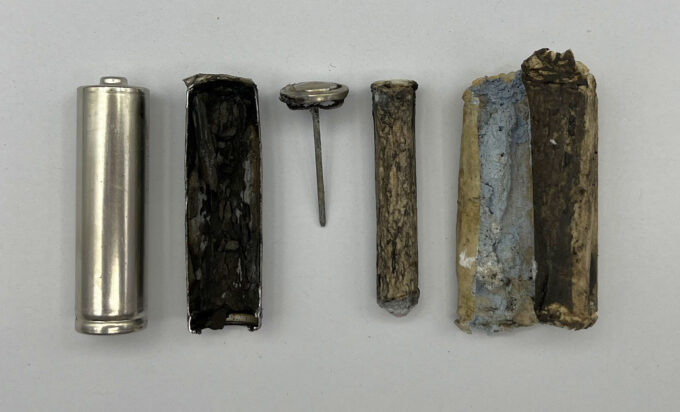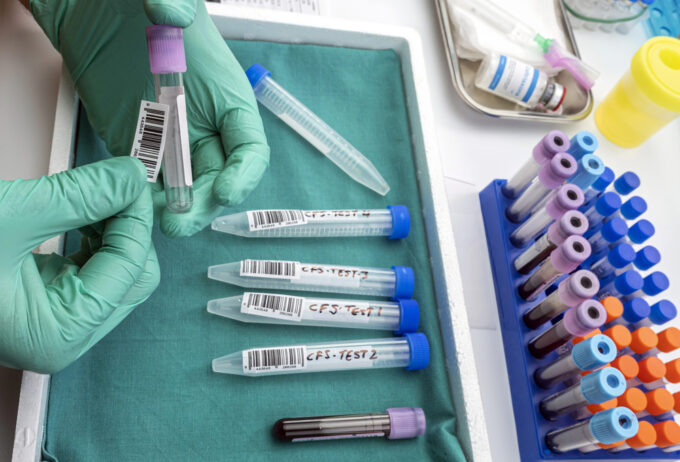Harmful ingredients in batteries: Control regulations
Although strict limits exist, batteries can still contain too many harmful ingredients such as mercury, cadmium and lead. The Federal Office for the Environment has therefore launched a control campaign.

Batteries as energy storage devices are practically ubiquitous and are used as starter batteries, in industrial equipment, but also in everyday items such as laptops, flashlights, etc. The demand for batteries - which includes rechargeable batteries - is huge. Because of the extreme demand for the raw materials used in electricity storage, these are already becoming scarce in some cases and correspondingly more expensive. Therefore, intensive research is being conducted to replace scarce or even rare materials with more common ones. In addition, some battery ingredients are harmful to health or even toxic. Here, too, science is looking for unproblematic substitutes. And indeed, there are promising research approaches for salt batteries, solid batteries or those that can even be composted after use.
What's inside a battery?
However, it may be some time before today's popular battery types are replaced by more sustainable ones. It is therefore important to take a closer look at the electricity storage systems available today. In Switzerland, a wide variety of battery models are sold - mainly by major distributors. They differ, for example, in the materials used. Many are based on zinc-manganese. But they can also contain silver oxide, nickel, lithium, iron sulfide, aluminum, lead and cadmium. In both Switzerland and the EU, trade and sales of batteries containing mercury (chemical: Hg) or cadmium (Cd) are severely restricted. There is a limit value for mercury in batteries of 5 mg/kg and one of 20 mg/kg for cadmium. For lead, a declaration obligation applies on the battery or on the packaging from a mass fraction of more than 40 mg/kg.
But what use are regulations if it is not possible to check whether they are being complied with? Because until recently, there was hardly any way to check compliance in Switzerland; there was simply no reliable and recognized method for precisely determining the elements mentioned in batteries.
Learned a lot about batteries
A team from Empa's Advanced Analytical Technologies research department led by chemist Renato Figi was therefore commissioned by the Swiss Federal Office for the Environment to develop a method for analyzing the heavy metals mercury, lead and cadmium in various types of batteries. A task that turned out to be not so simple. This is because, unlike many objects that can simply be crushed to analyze their contents and then the chemical elements in a solution can be analyzed by various spectrometers, batteries cannot simply be shredded. Even attempting to open a power storage device can be quite dangerous. Again and again, there are accidents in which batteries have exploded due to such manipulations.
Claudia Schreiner could not expose herself to this danger in the Empa laboratory. She therefore turned to an Empa colleague, a specialist in the field of batteries and their dangers. Marcel Held from the "Transport at Nanoscale Interfaces" department advised her first and foremost to carefully discharge all batteries to be examined. Only then should one dare to look at the "inner workings" of a battery.
But not all batteries are the same. There are countless different designs. Even if one battery looks like a twin to another from the outside, the construction inside can differ significantly!
And something else became apparent during the work: Potentially hazardous substances are not always found where one would expect them to be. They can also be found in the seemingly harmless coating.
Control regulations
But the painstaking work in the laboratory has paid off: Empa's innovative method can now reliably determine the ingredients of common batteries in the trace range. For analysis, the batteries must first be discharged and then separated. The various components of the different battery types are sorted and then dissolved by boiling under pressure using an acid mixture. In this way, the heavy metals are dissolved and can be determined spectroscopically.
The method now makes it possible to monitor compliance with existing regulations. It is being used as part of a broad-based campaign by the FOEN. To ensure that the random samples of the different battery types provide as representative a picture as possible, around 80 different batteries will be selected over the course of the year and then analyzed at Empa.
The cantonal laboratory in Zurich is in charge of the campaign. The results are expected in 2024.









